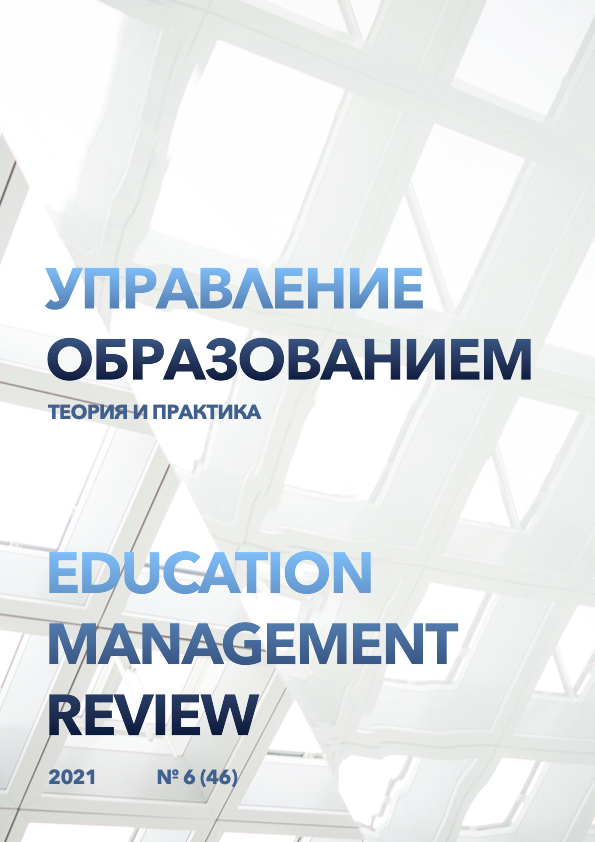Formation of intercultural communication among medical university students
DOI:
https://doi.org/10.25726/j3337-4877-2667-kKeywords:
Training, students, development, education, medicineAbstract
Modern trends in the development of higher education in the world and in Russia determine the special importance of the professional orientation of the training of future specialists in higher educational institutions, in particular medical ones. The professional sphere is fundamental in human activity, which is why high-quality training of students (including foreign ones) for the future profession is the leading task of higher educational institutions. It is known that the key to successful professional activity of a medical specialist is not only the availability of the necessary knowledge, but also the formation of readiness for professional communication, skills and abilities of professional communication aimed at direct communication with the patient and his family during the provision of professional medical care. In this regard, the issues of improving the quality of training of foreign students for professional communication, improving its results in the conditions of reducing study time, searching for more effective ways of professional development of the personality of the future medical worker require close attention. All this requires careful selection of educational material with a focus on the future professional activity of a foreign medical student, the development of a special pedagogical model of professional training that corresponds to professional tasks specific to the medical field.
References
Aldriwesh, M. G., Alyousif, S. M., & Alharbi, N. S. (2022). Undergraduate-level teaching and learning approaches for interprofessional education in the health professions: a systematic review. BMC Medical Education, 22(1). https://doi.org/10.1186/s12909-021-03073-0
Durrani, S. F., Hameed, A., Kumar, P. H., Arain, A. M., & Musharraf, F. F. (2021). Experiences of undergraduate medical students regarding virtual clinical rotations during COVID 19 in Karachi. Pakistan Paediatric Journal, 45(4), 450–456.
Guerandel, A., McCarthy, N., McCarthy, J., Mulligan, D., Lane, A., & Malone, K. (2021). An approach to teaching psychiatry to medical students in the time of Covid-19. Irish Journal of Psychological Medicine, 38(4), 293–299. https://doi.org/10.1017/ipm.2020.87
Joo, M., Chae, Y.-M., Lim, M.-S., & Park, S.-G. (2021). Analysis and suggestions on medical educators’ roles. Korean Journal of Medical Education, 33(4), 411–417. https://doi.org/10.3946/kjme.2021.209
Li, Y., Sears, N. A., Murray, I. V. J., & Yadav, K. K. (2021). Rethinking Teaching Team-Based Learning: The Challenges and Strategies for Medical Education in a Pandemic. AERA Open, 7. https://doi.org/10.1177/23328584211067207
Moxham, B. J., Brenner, E., Plaisant, O., Pais, D., Stabile, I., Scholz, M., … Chirculescu, A. R. M. (2022). The attitudes of European medical students towards the clinical importance of neuroanatomy. Annals of Anatomy, 239. https://doi.org/10.1016/j.aanat.2021.151832
Nguyen, M. T., Nguyen, T. G., Tran, T. T. A., Nguyen, T. T. N., Le, D. D., Nguyen, T. T. B., … Tran, B. T. (2022). Network analysis of psychological factors related to academic pressure faced by medical students in the central and highland regions of Vietnam. Medical Education Online, 27(1). https://doi.org/10.1080/10872981.2021.2007577
Orsini, E., Quaranta, M., Mariani, G. A., Mongiorgi, S., Cocco, L., Billi, A. M., … Ratti, S. (2022). Near-peer teaching in human anatomy from a tutors’ perspective: An eighteen-year-old experience at the university of Bologna. International Journal of Environmental Research and Public Health, 19(1). https://doi.org/10.3390/ijerph19010398
Samoylenko, N., Zharko, L., & Glotova, A. (2022). Designing online learning environment: Ict tools and teaching strategies. Athens Journal of Education, 9(1), 49–62. https://doi.org/10.30958/AJE.9-1-4
Su, B., Zhang, T., Yan, L., Huang, C., Cheng, X., Cai, C., & Cui, D. (2021). Online Medical Teaching in China During the COVID-19 Pandemic: Tools, Modalities, and Challenges. Frontiers in Public Health, 9. https://doi.org/10.3389/fpubh.2021.797694
Virani, S., Handuleh, J. I. M., Pereira-Sanchez, V., & Wolde-Giorgis, D. F. (2021). Teaching psychiatry in a low-income country during the COVID-19 pandemic: A hybrid collaborative psychiatry course. Asia-Pacific Psychiatry, 13(4). https://doi.org/10.1111/appy.12503
Yan, Z.-P., Li, K.-R., & Shang, W.-H. (2022). Application of multi-mode teaching steered by"HOPE" in the clinical teaching of contact lens [基于"HOPE"理念的多模式教学在接触镜学教学中的应用]. International Eye Science, 22(1), 109–111. https://doi.org/10.3980/j.issn.1672-5123.2022.1.23
Zarcone, D., & Saverino, D. (2022). Online lessons of human anatomy: Experiences during the COVID-19 pandemic. Clinical Anatomy, 35(1), 121–128. https://doi.org/10.1002/ca.23805
Zhou, H., Stephens, T. N., Luo, Y., Guo, J., Liu, Y., & Cai, X. (2021). Evaluation of the Effectiveness of a General Practice Clinical Skills Workshop Program [全科医学临床技能工作坊培训效果评价研究]. Chinese General Practice, 24(34), 4372–4377. https://doi.org/10.12114/j.issn.1007-9572.2021.00.246
Zhou, Y., Hou, J., Wu, S., Wang, N., Ma, L., Guan, J., … Wu, T. (2022). Application of VR Virtual Simulation Technology in Medical Teaching Experiment. Lecture Notes on Data Engineering and Communications Technologies, 98, 599–607. https://doi.org/10.1007/978-3-030-89511-2_77




